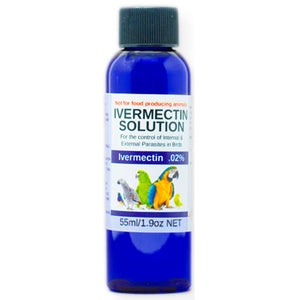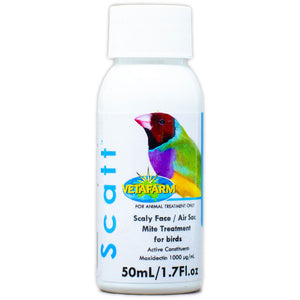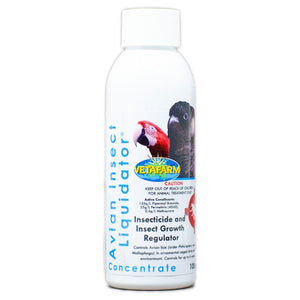Recognizing Signs of Illness in Your Bird
Recognizing Signs of Illness in Your Bird
Early signs of illness in birds are frequently not recognised by the pet owner. As a survival tactic in the wild, a sick bird will attempt to maintain a normal appearance for as long as possible, so that by the time any signs of illness are apparent, the bird may have been ill for some time. The bird that dies "suddenly" may be the result of the owners failure to make distinctions in the appearance or behaviour of the bird prior to that time.
OBSERVATION OF DROPPINGS
is a simple method of monitoring your bird's health. Paper towels, newspaper or other smooth surfaces can be used to line the cage bottom so that the number, volume, colour and consistence of the droppings can be noted daily.
GUIDELINES FOR EVALUATION OF DROPPINGS
NORMAL PET BIRD DROPPINGS CONSIST OF 3 PARTS:
-
FAECES are food waste material from the digestive tract. Normal faeces can vary somewhat in colour and consistency, depending on the diet. Diets with a high seed content usually produce homogeneous black or dark green faeces. Birds on formulated diets (pellets) normally exhibit softer, brownish faeces.
-
URINE, the liquid portion, is normally clear. A diet high in vegetable and fruit matter may increase the urine component.
-
URATES, or creamy white waste from the kidney, are often suspended in the liquid urine or appear to wrap around the faeces.
-
Prolonged moult or continual presence of pin feathers
-
Feather picking
-
Shifting of feet
-
Lameness
-
Brown stain in feathers over the nostrils
-
Crusty material in the nostrils
-
Loss of feathers or swelling around the eye
-
Overgrowth of beak or nails
-
Baldness
- Sores on feet
SIGNS OF ILLNESS
The following symptoms may indicate a serious health problem and veterinary assistance should be sought at once!
1. Change in character of the droppings.
The sick bird may exhibit:
-
decrease in the total number or volume of droppings
-
change in the colour of the URATES or URINE
-
an increase in the water content of the FAECES (diarrhoea)
-
decrease in the FAECES volume with increased URATES
-
increase in the URINE portion (polyuria)
-
Decreased or excessive food or water consumption.
-
Change in attitude, personality or behavior - decreased activity, decreased talking and singing, increased sleeping, no response to stimuli.
-
Change in appearance or posture - ruffled feathers, weakness, inability to stand, staying on the bottom of the cage, sitting low on the perch, drooping wings, convulsions.
-
Change in character of respiration - any noticeable breathing movement (e.g. tail bobbing) while resting, heavy breathing after exertion, change in quality of voice, respiratory sounds such as sneezing, wheezing or clicking.
-
Change in weight or general body condition as determined by a gram scale, or by handling; a prominent breast bone due to loss of breast muscle tissue is serious!
-
Enlargement or swelling of the body.
-
Injury or bleeding.
-
Vomiting or regurgitation.
-
Discharge from nostrils, eyes or mouth.
by Dr. Tony Gestier BVSc. (Hons.), MACVSc.




